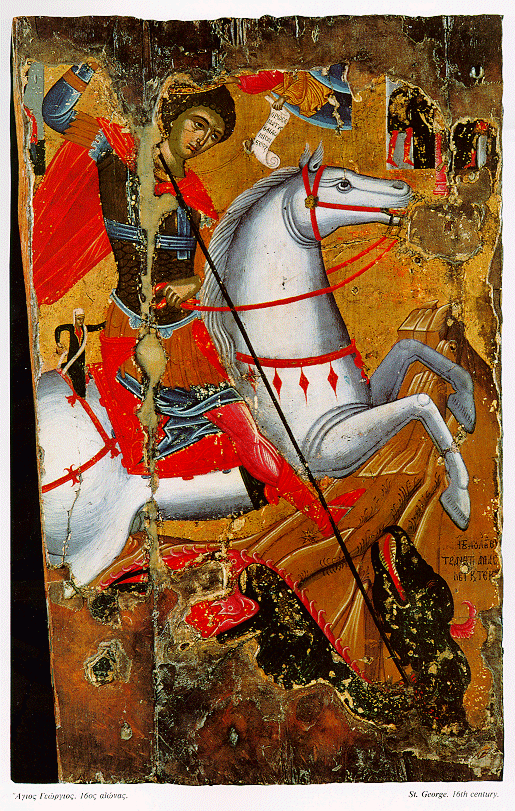

Evidently Chickentown / Conditional Discharge / Sleepwalk / 23rd / Beasley Street
Thirty Six Hours / Belladonna / The It Man / Limbo / A Distant Relation
St Georges day this year is celebrated on KYPP by uploading one of the best descriptive poets to emerge from England, Manchester, to be precise.
From the mid 1970’s John Cooper Clarke has released a body of work filled to the brim with gritty northern town kitchen sink humour mixed up with equal amounts of gritty northern town kitchen sink horror.
Very few writers of this era really hit the spot lyrically, Linton Kwesi Johnson would be one writer who ticks all the boxes, Ian Dury also…Paul Weller and Joe Strummer of course could also be contenders for creating relevant words describing the state of the nation in those dark mid to late 1970’s years.
Uploaded tonight is my favorite LP by John Cooper Clarke, crammed with classics ‘Beasley Street’ and ‘Thirty Six Hours’ being my particular favourites. Produced by Martin Hannet, the manc version of Phil Spector, these sessions included not just the Invisible Girls creating the music but also Pete Shelley, Karl Burns and Vinnie Riley.
A classic LP and well worth the listen. Text below on John Cooper Clarke scrapped off the Wikki, St George text stolen after dark from the Catholic Encylopedia.

“Your one famous contemporary at school was the late Martin Ruane [better known as wrestler Giant Haystacks, who weighed in at 6ft 11in and 672 lbs]. How have you stayed the shape you are?”
“I had TB as a boy. They said my skeletal frame never developed properly.”
“How did you get tuberculosis?”
“From my mother’s sister. It killed her.”
“Are you saying your aunt died while you were ill; before you had recovered?”
“Yes. I was sent to convalesce in Rhyl, with her husband. It was a very difficult time. There was a lot of death on my mother’s side. In the space of about a year, she lost her mother, her sister and her younger brother, Sid. He died in a motorbike accident on his way to their mother’s funeral. It was heartbreak upon heartbreak.”
“So where were you in all this?”
“I was in hospital. It was a terrible time. It produced what you might call a hierarchy of sorrow.”
Born at Hope Hospital, Salford, on 25 January 1949, John Cooper Clarke has one brother, 12 years his junior. His father George was an engineer. Hilda, his mother, was an unpublished poet.
“If there’s a gene, I got it from my ma. Her writing has this effortless quality. I’d love to get it published.”
I suggest that the year’s schooling he missed through illness might help explain how someone of his obvious ability came to fail the 11-plus.
“Maybe. I went to a secondary modern in Salford. But it was the worst school you could possibly imagine. I hated it from day one.”
“You were a mod, weren’t you?”
“I was, and it wasn’t easy. Where I grew up, the one unmistakable sign of homosexuality was to betray some interest in your appearance.”

After teenage years as a Mod, John served time as an apprentice engineer, a lab technician at Salford University (then Salford Tech, where he was interviewed by Tony Wilson for Granada TV) and also a lead type compositor. After a brief unsuccessful marriage, and a stint living in Dorset, John returned to Manchester and started reading his poems in clubs.
By 1976 and the arrival of punk, he was initially the support act for many seminal punk bands such as the Sex Pistols, Buzzcocks, The Fall, Joy Division, Elvis Costello, Richard Hell And The Voidoids and Siouxsie and the Banshees, to name but a few.
His biting, satirical, political and very funny verse delivered in a rapid-fire performance style. Before long, John was headlining his own gigs and drawing huge crowds of fans. John had a striking visual appearance; tall and thin with a mess of black hair, black sunglasses, drainpipe trousers and cuban-heeled boots. He was dubbed “The Bard of Salford” and given the moniker “punk poet”. During those heady days, John recorded four studio / live albums.
‘Où Est La Maison De Fromage’ is the debut album by John Cooper Clarke, originally released in 1978. It comprises a mix of live performances, demos and rehearsals. The name means “where is the house of cheese?” in French.
‘Disguise In Love’ is the second studio album by John Cooper Clarke, first released in 1978. Most of the tracks are spoken over musical accompaniment provided by Clarke’s band The Invisible Girls, except “Psycle Sluts 1&2” and “Salome Maloney” — both live recordings from the Ritz Ballroom in Manchester on 8 May 1978, delivered in his trademark a cappella style.
‘Walking Back To Happiness’ is the third album by John Cooper Clarke, originally released on 10″ clear vinyl in 1979. All tracks were recorded live. The final track, “Gimmix”, was also recorded in studio and was a UK top 40 hit that year. The penultimate track refers to a 1969 album by Nico, with whom Clarke had a romance in the early 1980s.
‘Snap, Crackle And Bop’ is the fourth album by John Cooper Clarke, released in 1980. As with ‘Disguise In Love’, the album was backed by The Invisible Girls and produced by Martin Hannett. Original first pressings of the LP included a booklet with the lyrics from John Cooper Clarke’s 1978 album ‘Disguise In Love’ together with photographs and artwork, the booklet was housed in a pocket which formed part of the jacket on the LP cover’s photograph.
One of the tracks off ‘Snap, Crackle And Bop’ “Beasley Street”, which sounds like Engels’ prose accounts of the Mancunian slums crossed with Bob Dylan’s “Desolation Row”, contains images such as “There’s a dead canary on a swivel seat/ There’s a rainbow in the road.” When it was released, the BBC censored the line: “[Then cabinet minister] Keith Joseph smiles and a baby dies/ In a box on Beasley Street.”
He also had limited success with the release a few singles, but it was the live arena where John found the greatest success and acclaim.
As punk began to wane in the late 1970’s, John’s star seemed to fade a bit also. He shared a flat in Brixton with Nico and found himself with a personal battle on his hands as he struggled with a serious heroin addiction, which he eventually kicked in the early 1990’s.
Since the punk days, he has been recognised as one of England’s most important poets and performers along with Linton Kwesi Johnson. Despite this, he shuns publicity and interviews, as he hates talking about himself.
The late Tony Wilson once stated “I’m not the one who will have his life turned into legend, in the way that happened to Baudelaire, Verlaine and Rimbaud. It won’t be me. It will be John Cooper Clarke”.

Saint George
Martyr, patron of England, suffered at or near Lydda, also known as Diospolis, in Palestine, probably before the time of Constantine. According to the very careful investigation of the whole question recently instituted by Father Delehaye, the Bollandist, in the light of modern sources of information, the above statement sums up all that can safely be affirmed about St. George, despite his early cultus and pre-eminent renown both in East and West (see Delehaye, “Saints Militaires”, 1909, pp. 45-76).
Earlier studies of the subject have generally been based upon an attempt to determine which of the various sets of legendary “Acts” was most likely to preserve traces of a primitive and authentic record. Delehaye rightly points out that the earliest narrative known to us, even though fragments of it may be read in a palimpsest of the fifth century, is full beyond belief of extravagances and of quite incredible marvels.
Three times is George put to death—chopped into small pieces, buried deep in the earth and consumed by fire—but each time he is resuscitated by the power of God. Besides this we have dead men brought to life to be baptized, wholesale conversions, including that of “the Empress Alexandra”, armies and idols destroyed instantaneously, beams of timber suddenly bursting into leaf, and finally milk flowing instead of blood from the martyr’s severed head.
There is, it is true, a mitigated form of the story, which the older Bollandists have in a measure taken under their protection (see Act. SS., 23 Ap., no. 159). But even this abounds both in marvels and in historical contradictions, while modern critics, like Amelineau and Delehaye, though approaching the question from very different standpoints, are agreed in thinking that this mitigated version has been derived from the more extravagant by a process of elimination and rationalization, not vice versa.
Remembering the unscrupulous freedom with which any wild story, even when pagan in origin, was appropriated by the early hagiographers to the honour of a popular saint (see, for example, the case of St. Procopius as detailed in Delehaye, “Legends”, ch. v) we are fairly safe in assuming that the Acts of St. George, though ancient in date and preserved to us (with endless variations) in many different languages, afford absolutely no indication at all for arriving at the saint’s authentic history.
This, however, by no means implies that the martyr St. George never existed. An ancient cultus, going back to a very early epoch and connected with a definite locality, in itself constitutes a strong historical argument. Such we have in the case of St. George. The narratives of the early pilgrims, Theodosius, Antoninus, and Arculphus, from the sixth to the eighth century, all speak of Lydda or Diospolis as the seat of the veneration of St. George, and as the resting-place of his remains (Geyer, “Itinera Hierosol.”, 139, 176, 288).
The early date of the dedications to the saint is attested by existing inscriptions of ruined churches in Syria, Mesopotamia, and Egypt, and the church of St. George at Thessalonica is also considered by some authorities to belong to the fourth century. Further the famous decree “De Libris recipiendis”, attributed to Pope Gelasius in 495, attests that certain apocryphal Acts of St. George were already in existence, but includes him among those saints “whose names are justly reverenced among men, but whose actions are only known to God”.
There seems, therefore, no ground for doubting the historical existence of St. George, even though he is not commemorated in the Syrian, or in the primitive Hieronymian Martyrologium, but no faith can be placed in the attempts that have been made to fill up any of the details of his history. For example, it is now generally admitted that St. George cannot safely be identified by the nameless martyr spoken of by Eusebius (Church History VIII.5), who tore down Diocletian’s edict of persecution at Nicomedia.
The version of the legend in which Diocletian appears as persecutor is not primitive. Diocletian is only a rationalized form of the name Dadianus. Moreover, the connection of the saint’s name with Nicomedia is inconsistent with the early cultus at Diospolis.
Still less is St. George to be considered, as suggested by Gibbon, Vetter, and others, a legendary double of the disreputable bishop, George of Cappadocia, the Arian opponent of St. Athanasius. “This odious stranger”, says Gibbon, in a famous passage, “disguising every circumstance of time and place, assumed the mask of a martyr, a saint, and a Christian hero, and the infamous George of Cappadocia has been transformed into the renowned St. George of England, the patron of arms, of chivalry, and of the Garter.” “But this theory, says Professor Bury, Gibbon’s latest editor, “has nothing to be said for it.” The cultus of St. George is too ancient to allow of such an identification, though it is not improbable that the apocryphal Acts have borrowed some incidents from the story of the Arian bishop.
Again, as Bury points out, “the connection of St. George with a dragon-slaying legend does not relegate him to the region of the myth, for over against the fabulous Christian dragon-slayer Theodore of the Bithynian Heraclaea, we can set Agapetus of Synnada and Arsacius, who though celebrated as dragon-slayers, were historical persons”. This episode of the dragon is in fact a very late development, which cannot be traced further back than the twelfth or thirteenth century. It is found in the Golden Legend (Historia Lombardic of James de Voragine and to this circumstance it probably owes its wide diffusion. It may have been derived from an allegorization of the tyrant Diocletian or Dadianus, who is sometimes called a dragon (ho bythios drakon) in the older text, but despite the researches of Vetter (Reinbot von Durne, pp.lxxv-cix) the origin of the dragon story remains very obscure.
In any case the late occurrence of this development refutes the attempts made to derive it from pagan sources. Hence it is certainly not true, as stated by Hartland, that in George’s person “the Church has converted and baptized the pagan hero Perseus” (The Legend of Perseus, iii, 38). In the East, St. George (ho megalomartyr), has from the beginning been classed among the greatest of the martyrs. In the West also his cultus is very early. Apart from the ancient origin of St. George in Velabro at Rome, Clovis (c. 512) built a monastery at Baralle in his honour (Kurth, Clovis, II, 177).
Arculphus and Adamnan probably made him well known in Britain early in the eighth century. His Acts were translated into Anglo-Saxon, and English churches were dedicated to him before the Norman Conquest, for example one at Doncaster, in 1061. The crusades no doubt added to his popularity. William of Malmesbury tells us that Saints George and Demetrius, “the martyr knights”, were seen assisting the Franks at the battle of Antioch, 1098 (Gesta Regum, II, 420). It is conjectured, but not proved, that the “arms of St. George” (argent, a cross, gules) were introduced about the time of Richard Coeur de Lion.
What is certain is that in 1284 in the official seal of Lyme Regis a ship is represented with a plain flag bearing a cross. The large red St. George’s cross on a white ground remains still the “white ensign” of the British Navy and it is also one of the elements which go to make up the Union Jack. Anyway, in the fourteenth century, “St. George’s arms” became a sort of uniform for English soldiers and sailors. We find, for example, in the wardrobe accounts of 1345-49, at the time of the battle of Crecy, that a charge is made for 86 penoncells of the arms of St. George intended for the king’s ship, and for 800 others for the men-at-arms (Archaeologia, XXXI, 119).
A little later, in the Ordinances of Richard II to the English army invading Scotland, every man is ordered to wear “a signe of the arms of St. George” both before and behind, while the pain of death is threatened against any of the enemy’s soldiers “who do bear the same crosse or token of Saint George, even if they be prisoners”. Somewhat earlier than this Edward III had founded (c. 1347) the Order of the Garter, an order of knighthood of which St. George was the principal patron. The chapel dedicated to St. George in Windsor Caste was built to be the official sanctuary of the order, and a badge or jewel of St. George slaying the dragon was adopted as part of the insignia. In this way the cross of St. George has in a manner become identified with the idea of knighthood, and even in Elizabeth’s days, Spenser, at the beginning of his Faerie Queene, tells us of his hero, the Red Cross Knight:
But on his breast a bloody Cross he bore,
The dear remembrance of his dying Lord,
For whose sweet sake that glorious badge we wore
And dead (as living) ever he adored.
We are told also that the hero thought continually of wreaking vengeance:
Upon his foe, a dragon horrible and stern.
Ecclesiastically speaking, St. George’s day, 23 April, was ordered to be kept as a lesser holiday as early as 1222, in the national synod of Oxford. In 1415, the Constitution of Archbishop Chichele raised St. George’s day to the rank of one of the greatest feasts and ordered it to be observed like Christmas day. During the seventeenth and eighteenth centuries St. George’s day remained a holiday of obligation for English Catholics. Since 1778, it has been kept, like many of these older holidays, as a simple feast of devotion, though it ranks liturgically as a double of the first class with an octave.
Saint George and the dragon
The best known form of the legend of St. George and the Dragon is that made popular by the “Legenda Aurea”, and translated into English by Caxton. According to this, a terrible dragon had ravaged all the country round a city of Libya, called Selena, making its lair in a marshy swamp. Its breath caused pestilence whenever it approached the town, so the people gave the monster two sheep every day to satisfy its hunger, but, when the sheep failed, a human victim was necessary and lots were drawn to determine the victim.
On one occasion the lot fell to the king’s little daughter. The king offered all his wealth to purchase a substitute, but the people had pledged themselves that no substitutes should be allowed, and so the maiden, dressed as a bride, was led to the marsh. There St. George chanced to ride by, and asked the maiden what she did, but she bade him leave her lest he also might perish. The good knight stayed, however, and, when the dragon appeared, St. George, making the sign of the cross, bravely attacked it and transfixed it with his lance.
Then asking the maiden for her girdle (an incident in the story which may possibly have something to do with St. George’s selection as patron of the Order of the Garter), he bound it round the neck of the monster, and thereupon the princess was able to lead it like a lamb. They then returned to the city, where St. George bade the people have no fear but only be baptized, after which he cut off the dragon’s head and the townsfolk were all converted.
The king would have given George half his kingdom, but the saint replied that he must ride on, bidding the king meanwhile take good care of God’s churches, honour the clergy, and have pity on the poor. The earliest reference to any such episode in art is probably to be found in an old Roman tombstone at Conisborough in Yorkshire, considered to belong to the first half of the twelfth century. Here the princess is depicted as already in the dragon’s clutches, while an abbot stands by and blesses the rescuer.
Dave Sez
April 23, 2011 at 2:00 pmExcellent choice – still got this on vinyl with the booklet on the front sleeve. I shall return the favour by upping for you a set from Edinburgh in 2005 – unfortunately, I can’t track down where I found it, credit to the unknown taper. 30 min set, good audience recording, mostly stand-up repartee rather than set poems.
http://www.mediafire.com/?we4gthi55v8bwb5
A outing by Mr JCC only days ago is here, thanks to roy:
http://rocketremnants.blogspot.com/2011/04/johnny-clarke-ha-ha-ha.html
Searches at the sites below will turn up many of JCC’s out-of-print singles and Ou Est La Maison De Fromage, the rough but classic debut album:
http://punkfriction.blogspot.com/search/label/John%20Cooper%20Clarke
http://adashingblade.blogspot.com/search/label/John%20Cooper-Clarke
http://skamanchackett.blogspot.com/search?q=John+Cooper+Clarke
Cheers, Dave Sez.
pinkie
May 15, 2011 at 1:17 pmThankyou Penguin, and thanks Dave for the Edinburgh set – hope you’re well old chap B-)